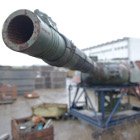This map layer shows where the Treaty on Conventional Armed Forces in Europe (CFE), and the follow-up adapted treaty, has been ratified.
The Treaty on Conventional Armed Forces in Europe (CFE) was agreed in 1990 between the NATO member states and the Warsaw Pact countries respectively and came into force in 1992. It aims to achieve a significant reduction in weapons arsenals and the numbers of conventional armed forces. To this end, the parties undertake to engage in detailed information exchanges on the number of conventional weapons (tanks, armoured combat vehicles, artillery systems, combat aircraft and attack helicopters) and armed forces and thus build mutual confidence.
In principle, the CFE remains valid, but the situation in the wake of NATO expansion means there are new NATO members that are not covered by CFE restrictions, producing tensions between NATO and Russia. Russia withdrew its ratification of the CFE in 2007. And, since 2011, even NATO members who ratified the CFE have stopped sharing details of their conventional armed forces with Russia.
In 1999, in response to demands for the treaty to be updated in line with current realities at the time, the participating states agreed to an adapted treaty. Russia, Belarus, Ukraine and Kazakhstan ratified the Adapted CFE Treaty in 2004. The NATO members, however, made their support conditional on Russia making foreign policy changes that go beyond treaty matters. The stalemate means the treaty had not entered into force by the time of writing (2013).
In a number of cases, however, the CFE Treaty did lead to heavy weapons systems being destroyed and can, therefore, be seen as a disarmament success.






